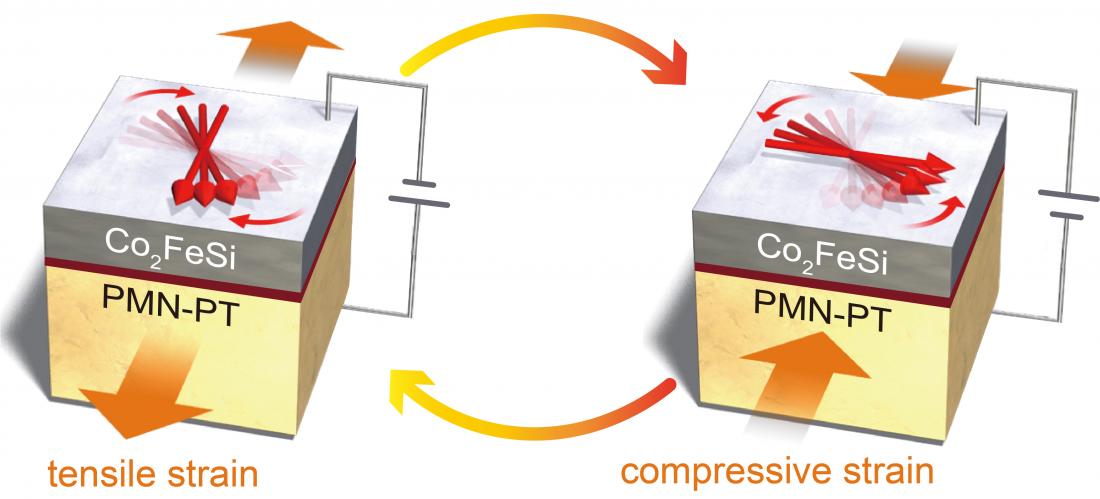Interfacial multiferroic structure and control of magnetization orientation.
Researchers reveal how magnetization direction can be controlled using strain in an interfacial multiferroic material
Controlling the direction of magnetization using low electric field is necessary for developing efficient spintronic devices. In spintronics, properties of an electron’s spin or magnetic moment are used to store information. The electron spins can be manipulated by straining orbital magnetic moments to create a high-performance magnetoelectric effect.
Japanese researchers, including Jun Okabayashi from the University of Tokyo, revealed a strain-induced orbital control mechanism in interfacial multiferroics. In multiferroic material, the magnetic property can be controlled using an electric field—potentially leading to efficient spintronic devices. The interfacial multiferroics that Okabayashi and his colleagues studied consist of a junction between a ferromagnetic material and a piezoelectric material. The direction of magnetization in the material could be controlled by applying voltage.
The team showed the microscopic origin of the large magnetoelectric effect in the material. The strain generated from the piezoelectric material could change the orbital magnetic moment of the ferromagnetic material. They revealed element-specific orbital control in the interfacial multiferroic material using reversible strain and provided guidelines for designing materials with a large magnetoelectric effect. The findings will be useful in developing new information writing technology that consumes less power.
###
The article, “Strain-induced specific orbital control in a Heusler alloy-based interfacial multiferroics,” was published in NPG Asia Materials at DOI: https://doi.org/10.1038/s41427-023-00524-6
About Osaka University
Osaka University was founded in 1931 as one of the seven imperial universities of Japan and is now one of Japan's leading comprehensive universities with a broad disciplinary spectrum. This strength is coupled with a singular drive for innovation that extends throughout the scientific process, from fundamental research to the creation of applied technology with positive economic impacts. Its commitment to innovation has been recognized in Japan and around the world, being named Japan's most innovative university in 2015 (Reuters 2015 Top 100) and one of the most innovative institutions in the world in 2017 (Innovative Universities and the Nature Index Innovation 2017). Now, Osaka University is leveraging its role as a Designated National University Corporation selected by the Ministry of Education, Culture, Sports, Science and Technology to contribute to innovation for human welfare, sustainable development of society, and social transformation.
Website: https://resou.osaka-u.ac.jp/en



